Poll: Sticker shock
Why Minnesotans will be well-served to learn the true costs of their favorite energy sources before forming opinions on renewable energy
The latest Thinking Minnesota Poll reveals that Minnesotans love renewable energy sources like wind turbines and solar panels. Unfortunately, the poll also demonstrates there is a wide gap between what Minnesotans believe about renewable energy sources and their knowledge of the true costs involved.
The Thinking Minnesota Poll is a quarterly survey conducted for Center of the American Experiment by Meeting Street Insights, a Charleston, South Carolina-based polling company. For this report, Meeting Street interviewed 500 Minnesotans between August 30 and September 2. It has a margin of error of ±4.38%.
Our polling found that once the public learns the real costs of renewable energy solutions, their support for these solutions diminishes drastically. That’s because in order to achieve the results promised by lofty sounding proposals such as Tim Walz’s “Green New Deal,” Minnesotans would have to sacrifice their money, their values, their land and most importantly, their confidence that we won’t experience blackouts in the middle of a polar vortex.
The poll started by asking respondents to rank the environmental impacts of different energy sources. Their answers provided a clue about the disconnect between people’s beliefs about energy and the actual facts. While they gave high marks to both solar (67%) and wind (59%), only 21% of respondents rated nuclear energy as very good for the environment, ranking it just ahead of coal.
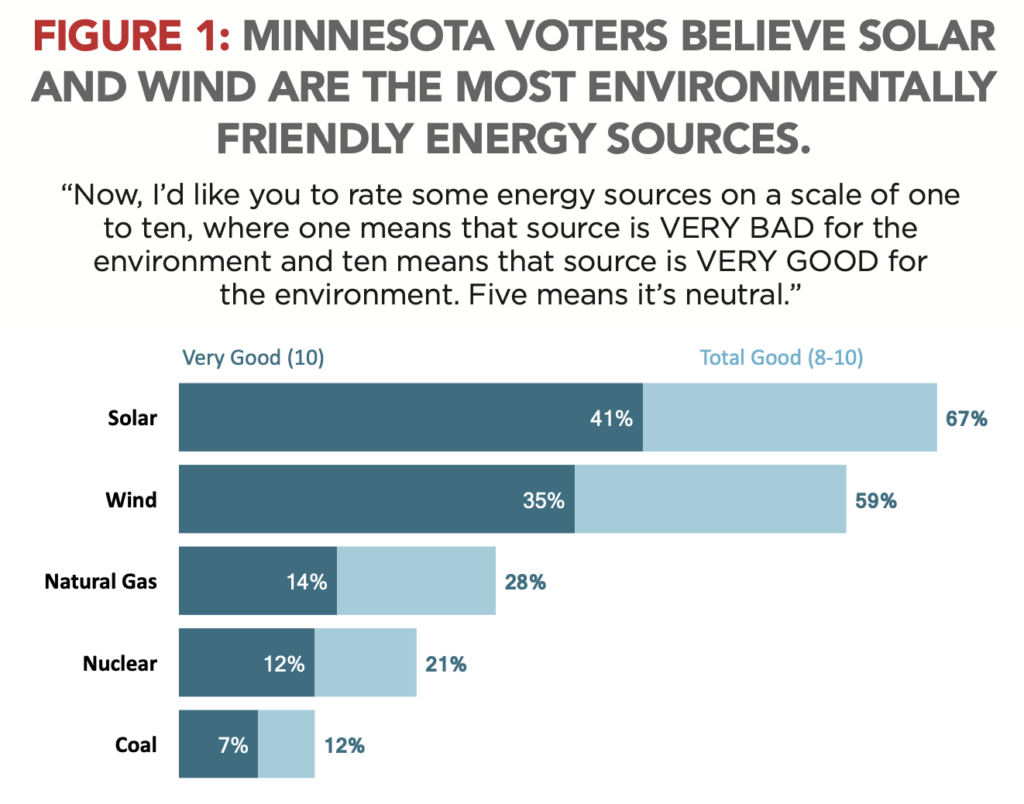
In fact, nuclear energy is the cleanest source of energy for the environment, emitting zero carbon dioxide and using far fewer raw materials than other energy sources. Concerns about spent nuclear fuel storage apparently cloud our collective judgment on the safety and environmental benefits of nuclear power.
“Minnesotans need to realize that all human activities impact the environment, whether through manufacturing, mining, or even tourism,” said Isaac Orr, Policy Fellow for Energy and the Environment at American Experiment. “We can’t have a real discussion on energy policy until we first recognize that each energy source has a cost, from construction to decommissioning.”
Ironically, while Minnesotans don’t seem to understand the environmental benefits of nuclear energy, 53% do support the construction of new nuclear power plants in Minnesota, as long as they pass a rigorous permitting process. Doing so would require the legislature to lift the current ban on even considering new nuclear plants.
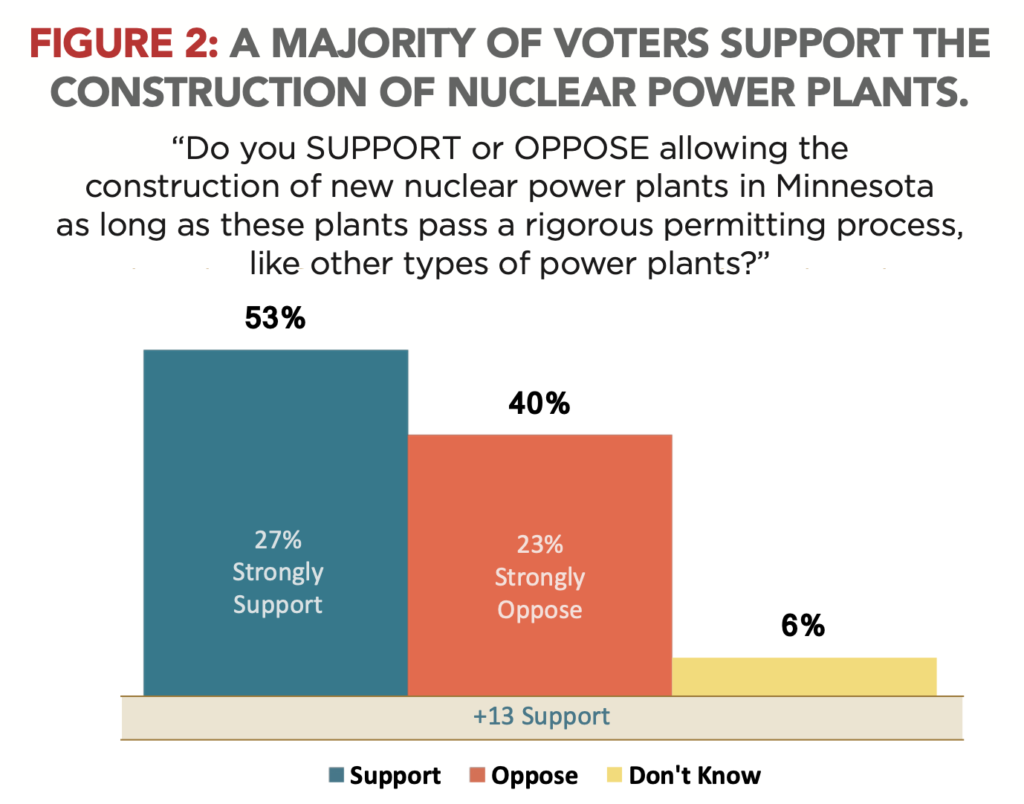
Walz’s plan to require 100% of Minnesota’s energy to come from carbon-free sources such as wind and solar received initial support from almost 60% of respondents. But that support falls fast when respondents understand some of the true costs of Walz’s plan.
First, Minnesotans (including Walz) have no idea about the amount of metal needed to accomplish his goal of 100% renewables, and more importantly where that metal will ultimately come from. Fully 79% of respondents said they would be less likely to support the plan when they realized most of the metal would come from third world mining operations, often employing child labor.
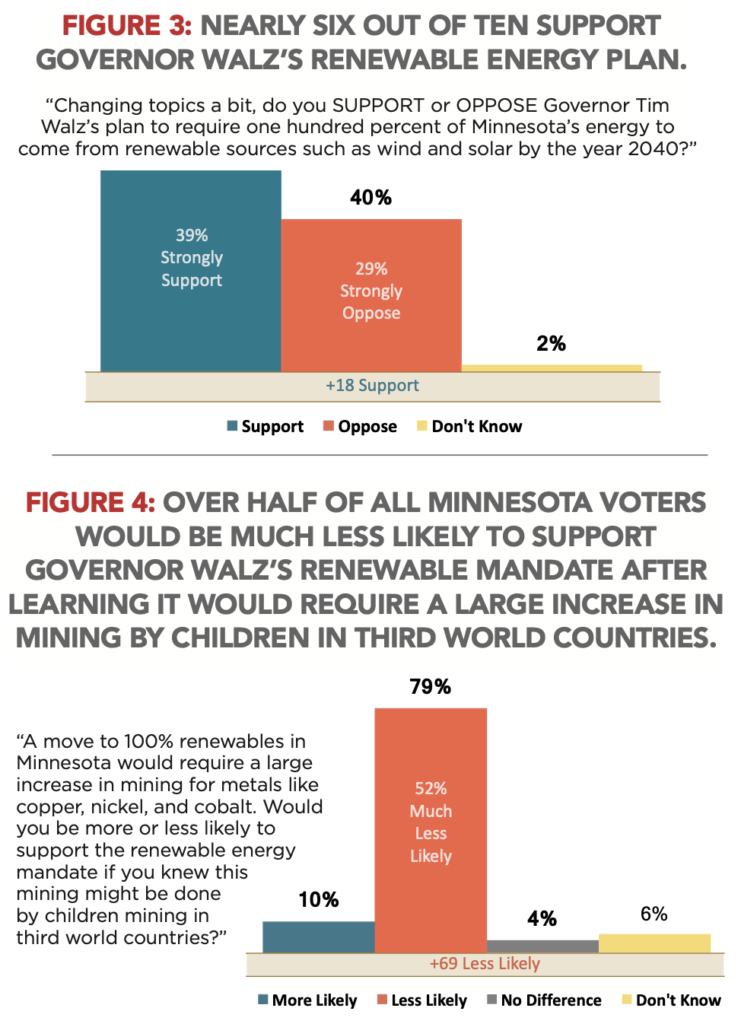
As Orr outlines in Thinking Minnesota’s cover story this month, “decarbonizing” Minnesota would require 4% of the global annual production of copper, 18% of global nickel production, and 164% of global annual cobalt production. Just for our little state!
“We hear a lot about following the science – when it comes to the environment, that means asking the tough questions about the real costs of each source of energy,” added John Hinderaker, President of Center of the American Experiment. “These Green New Deal proposals literally fall under their own weight when you properly consider the amount of metal needed to accomplish their goals.”
Respondents also reacted negatively when they were told we rely on China for the majority of the metals needed for wind turbines, solar panels and batteries. Sixty-five percent said they would be less likely to support a plan that relied so heavily on China for raw materials.
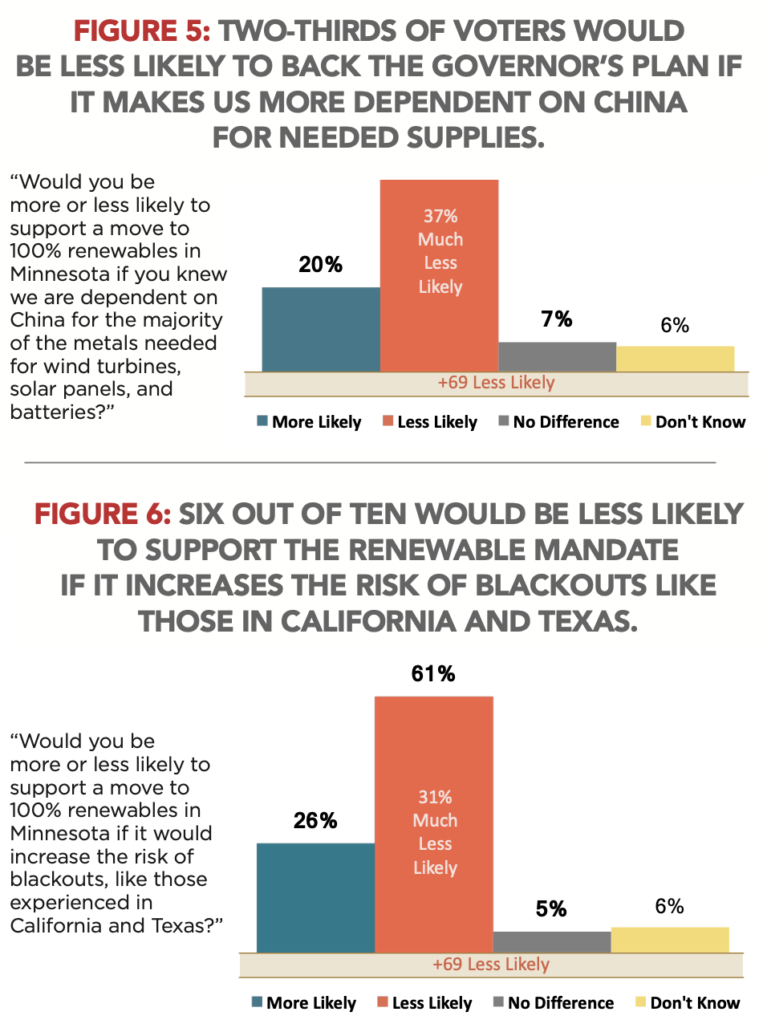
Support for wind and solar also wanes significantly when respondents consider the threat of blackouts like those experienced in Texas and California recently. Sixty-one percent of Minnesotans dropped their support for renewable energy mandates once they considered the risk of blackouts.
And what about financial cost? How much are Minnesotans willing to spend each year to reduce carbon dioxide emissions? The poll discovered that 80% of Minnesotans would be unwilling to pay more than $500 per year to support such a plan. Our energy prices have already skyrocketed past the national average just to comply with Gov. Tim Pawlenty’s modest 25% renewable mandate enacted in 2007. The cost to Minnesota families for a 100% mandate will vastly exceed $500 per year.
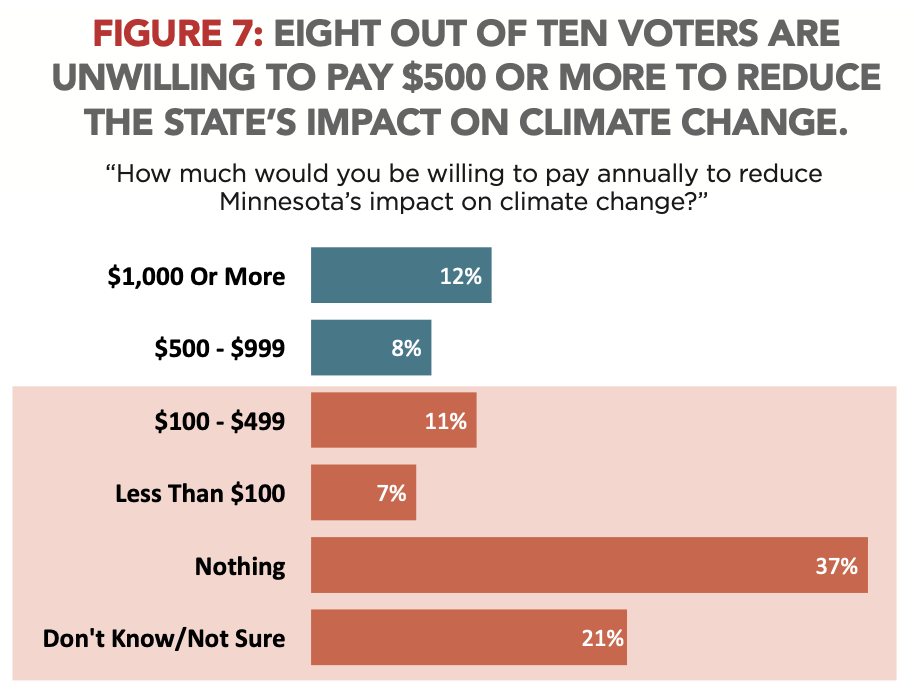
Someone famously once said you’re entitled to your own opinion, but not your own facts. Minnesotans will be well- served to learn the true costs of their favorite energy sources before forming opinions on climate change action. And leaders like Tim Walz need to be challenged about what it will really take to accomplish their feel-good plans to save mother earth.
About the pollster
Rob Autry, founder of Meeting Street Insights, is one of the nation’s leading pollsters and research strategists.